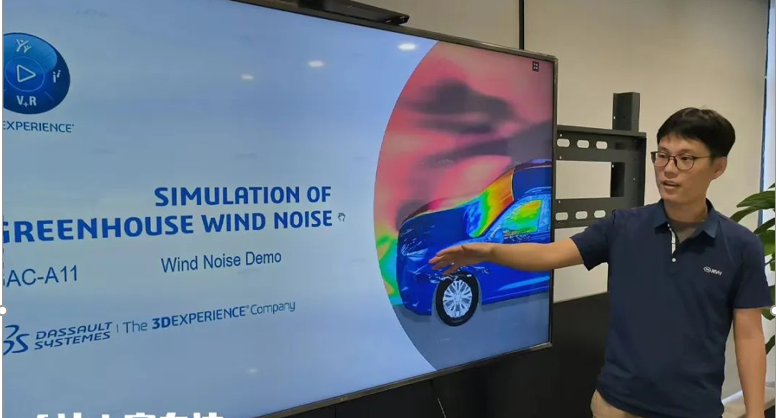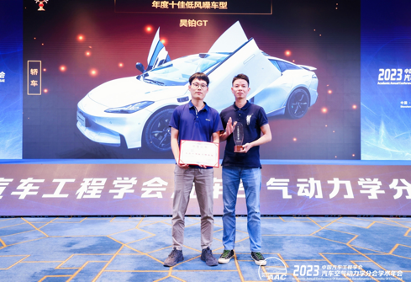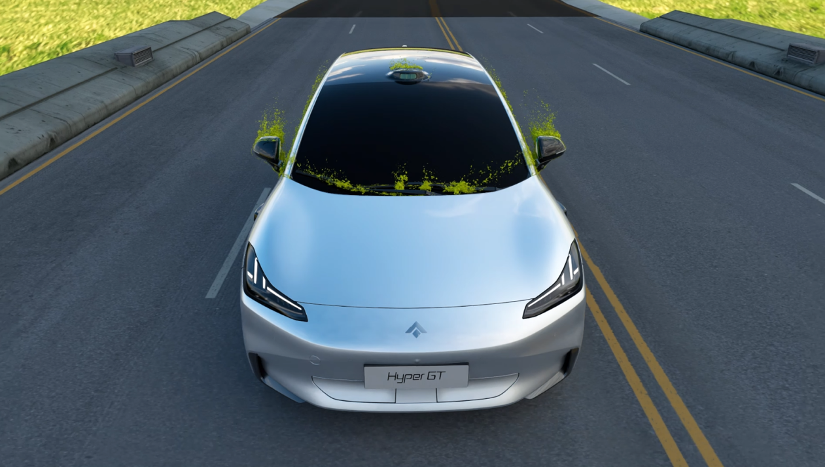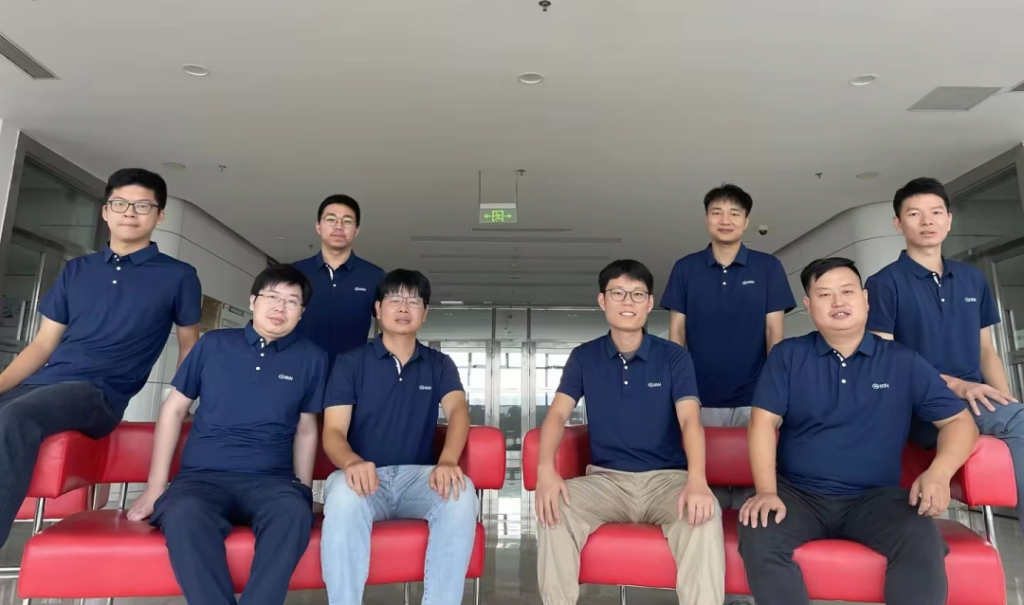From Toy Cars to Automobiles
When opening any child’s toy box, you are likely to see a number of fun little cars. For Ye Bin these toy cars were also a big part of his childhood, influencing his decision to become an automotive engineer and designer. Bin has always been enamored with machinery since he was a kid, with the principles of mechanical operation always in the forefront of his mind, along with the logical thinking that is needed for mechanical research. After completing his undergraduate study, Bin continued to deepen his interest in controlling mechanical vibration during his graduate studies. From structures to fluids, Bin also gradually began to explore the benefits of simulation.

Advantages of Simulation
After completing his master’s study in 2015, Ye Bin joined GAC Research Institute to develop wind noise performance where he has worked for over 8 years. He is Director of the Wind Noise and Acoustics Package of the NVH Department at GAC’s Vehicle Development Center. In the role transition from student to engineer, Bin gained a deeper understanding of engineering and simulation.
“Our relationship with simulation has been constantly changing based on different engineering experiences.” Ye Bin believes that the relationship between simulation technology and engineers is dynamic: in his school days, simulation was more like a good teacher who guides students in the right direction; after entering the workplace, simulation became a powerful tool. “The more important value of simulation is that it improves the engineering and technical personnel’s efficiency.”
Out of the Comfort Zone
Model development under the traditional mode is a long process, with a lot of trial and error work, and repeated iterations, at a slower overall pace. Without simulation, the team would validate the development process at a lower frequency. To some extent, this “slower” mode is a “comfort zone” of the entire industry. Today, GAC Research Institute is undergoing a full digital transformation. Dr. Tang Huanqiu, Chief Technical Director, and Ren Chao, Head of the NVH Department, have asked the NVH team to “use virtual simulation to drive NVH’s digital transformation.” Ye Bin and his team have boldly pressed ahead and chose to establish simulation-based forward development, using high-precision simulation to replace a large number of experiments and further reduce the R&D cycle.
Today, electrification and smart networking are in full swing industrywide, with rapid technological iterations. Chinese brands are all striving to explore more eye-catching breakthroughs. “With the increasing involvement of simulation technology in the industry, Chinese automotive companies are now at the global leading level of wind noise simulation technology. GAC where Ye Bin works is one of the leaders,” said Mr. Heinz FRIZ, a global fluid simulation expert of SIMULIA at Dassault Systèmes.

For NVH research, being bold and careful is the key to making innovative breakthroughs. Wind noise, as one of the 100+ performance indicators in vehicle development, is a key factor that car owners can directly and effectively perceive when using the vehicle. High performance of wind noise is significant to reduce user complaints, increase user satisfaction and create a high-end image of automotive brands. To study NVH features, we must use CAE technology to build a model of vehicle dynamics that involves multiple disciplinary theories such as multi-body system dynamics and finite element analysis (FEA). So for NVH research, fast iteration and high accuracy are important industry features. “SIMULIA PowerFLOW meets our requirements for fast iteration by making accurate computations at a fast-enough speed.” SIMULIA PowerFLOW is a CFD software that is developed based on the lattice Boltzmann method (LBM). Compared to traditional computational fluid dynamics (CFD) methods, PowerFLOW simulates and analyzes fluid flows in a more reliable, accurate and precise way.
“For example, the A-pillar styling is an important factor affecting wind noise and mutually constrained by performances such as visual field and safety. Thanks to PowerFLOW’s high-precision simulation technology up to 95%, our team has completed hundreds of ‘0’ cost optimizations for styling vehicle exterior by continuously trying various combinations of angles and differences between A-pillar and glass surface,” said Ye Bin. For styling vehicle exterior, Ye Bin’s team has designed equivalent verification schemes through road and wind tunnel tests on standard and model cars, and others. Thanks to the high-precision simulations in PowerFLOW, each vehicle undergoes almost 100 iterations of simulation optimization for key areas noise-generating such as the A-pillar and rearview mirror, with an average calculation time of over 1,000 hours.

The Best Tool
In the 8 years after joining GAC, Ye Bin and his wind noise team have, in collaboration with Dassault Systèmes, organically combined LBM with the statistical energy analysis (SEA) method to build a numerical wind tunnel and a simplified SEA model based on LBM. In China, they apply it first to simulation analysis of wind noise inside the car for building a leading process of wind noise forward development, as well as advanced simulation technologies such as crosswind and cavity wind noise analyses, and for developing a series of models with high level of wind noise performance, such as the Hyper GT and Trumpchi E9. Among them, the Hyper GT won the title of “Top 10 Low Wind Noise Vehicle Models of 2023” and received the A-level certification, the highest level, for low wind noise vehicles that is issued by CAERI.
Ye Bin describes the collaboration between his team and SIMULIA as a two-way process. The high-precision simulation of PowerFLOW must be significant for GAC to advance wind noise development. Efficient, high-precision simulation meets the rapid iteration of technologies in the industry and produces the effect of 1+1 > 2. The team led by Ye Bin is also continuously learning from the experience and insights gained in the relationship with SIMULIA.

“In the cooperation, the GAC Wind Noise Team led by Director Ye Bin has put forward very high requirements of simulation accuracy and performance to our PowerFLOW technical team, which drives us to continuously expand and deepen the exploration of scenario where simulation is used to replace physical experiments under greater motivation,” remarked Mr. Bai Rui, Director of Simulation Technology, Dassault Systèmes, Greater China. “The in-depth cooperation between our two companies in many cutting-edge simulation technologies brings results at the internationally advanced level. We will strive together to get the ultimate wind noise level for products and the best user experience.”
On the one hand, GAC collaborates with SIMULIA to advance its development process based on existing technologies. On the other hand, they both are leveraging simulation to solve more challenging problems to gain true innovation and become leaders in the international market. Now, the two companies are exploring technological fields together that are at the forefront around the world. With their strong strength and innovation capabilities, the independent brands in China are competing with their peers that are at the international stage. From following leaders’ footsteps to competing with leaders on the same stage and then leading in the overall market, SIMULIA and GAC will continue to strive towards this goal in their future collaborative innovation and empowered development.

Interested in the latest in simulation? Looking for advice and best practices? Want to discuss simulation with fellow users and Dassault Systèmes experts? The SIMULIA Community is the place to find the latest resources for SIMULIA software and to collaborate with other users. The key that unlocks the door of innovative thinking and knowledge building, the SIMULIA Community provides you with the tools you need to expand your knowledge, whenever and wherever.

